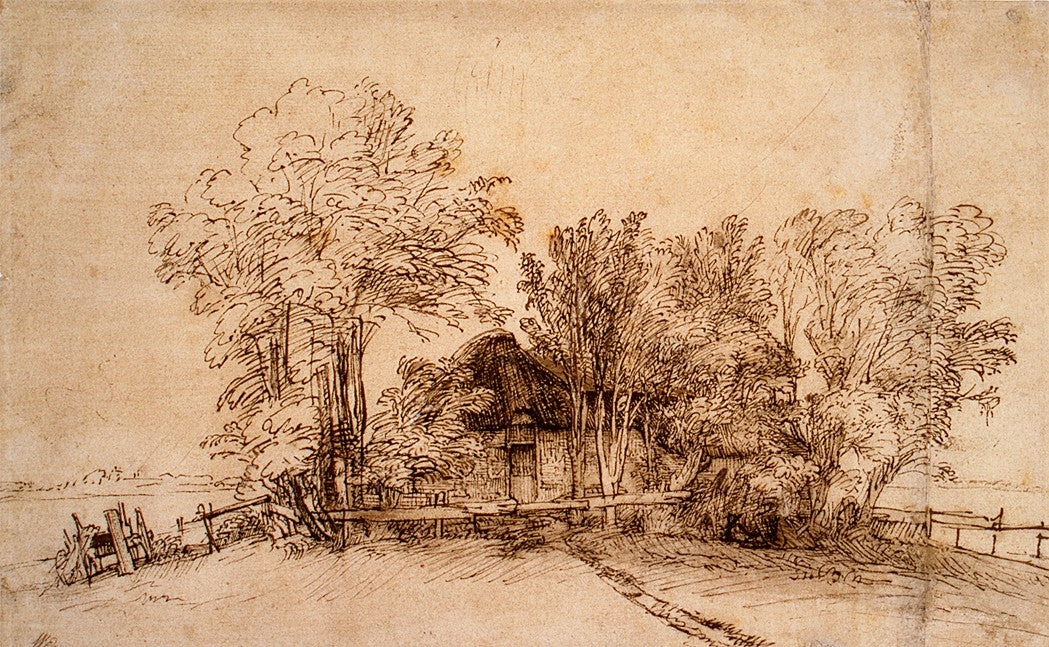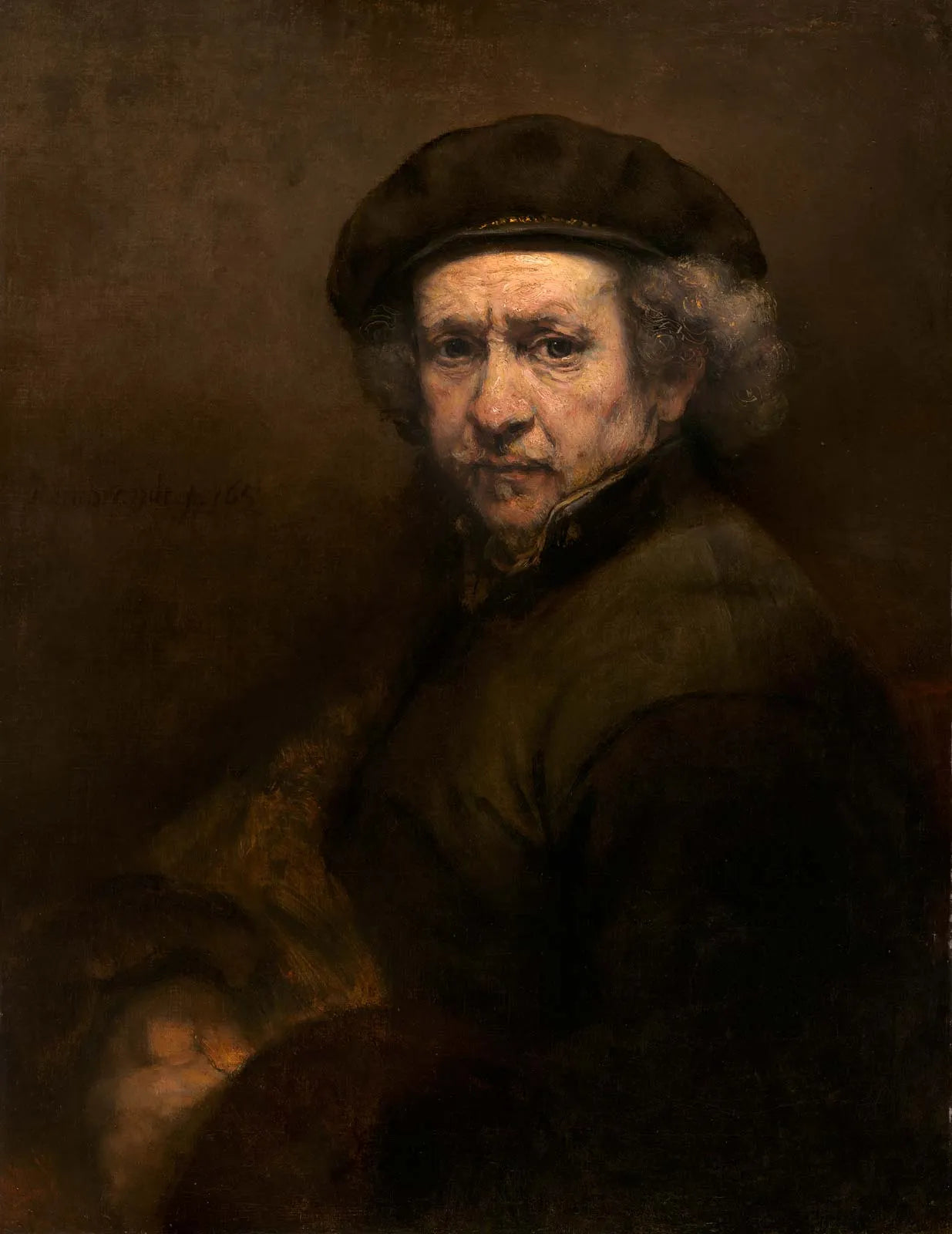
Cottage among Trees
Among Rembrandt van Rijn’s many drawings of rustic architecture, this particular study of a cottage stands out for its unusually refined execution and deliberate compositional structure. Unlike his more spontaneous, observational sketches of the Dutch countryside, this drawing displays a clear intention to elevate the humble subject through the lens of formal balance and artistic control.
Rembrandt employed fine pen lines of consistent width to construct the scene, lending it a calm, deliberate rhythm. His use of wash is minimal, applied sparingly to articulate shadows and volume, while the texture of the thatched roof is rendered with bold, ink-saturated strokes that echo the soft, velvety quality of drypoint burr—a visual and tactile effect more often associated with his etchings than his drawings. This choice creates a compelling link between his graphic work and his more painterly or print-based techniques, giving the drawing a richness that exceeds its modest subject.
Architecturally, the cottage is positioned parallel to the picture plane, a decision that introduces a strong sense of stability and frontal clarity. In a striking compositional move, Rembrandt physically extended the drawing by attaching a narrow strip of paper to the right edge. On this added section, he continued the landscape—carrying over the fences, distant horizon, and delicately branching trees. This framing device not only emphasizes symmetry and spatial coherence, but also reveals Rembrandt’s conscious engagement with Italian Renaissance compositional ideals, reinterpreted through the earthy lens of Northern realism.
Such classical restraint and structural poise evoke the sensibility of Rembrandt’s paintings from the late 1640s, particularly the "Supper at Emmaus" (1648, Musée du Louvre, Paris), where solemn architecture and spiritual quietude merge seamlessly. In this drawing, as in that painting, Rembrandt demonstrates his ability to infuse ordinary settings with dignity and composure, transforming a simple farmhouse into a composition of balance, depth, and understated majesty.
Choose options


Cottage among Trees
About Artist

Rembrandt Harmenszoon van Rijn
